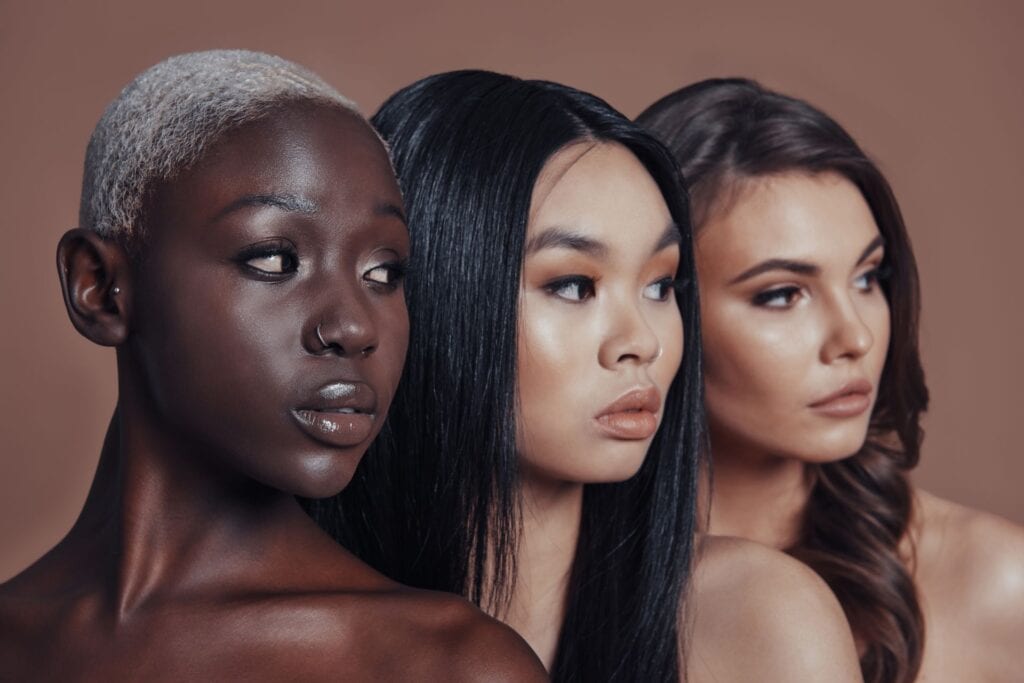The appearance of wrinkles is an inevitable part of the aging process that can cause anxiety and insecurity in individuals. Although there are numerous treatments available to help reduce or eliminate wrinkles, Botox has become one of the most popular options due to its proven effectiveness in improving skin texture and reducing wrinkle visibility. Dermatologists have studied this treatment for years, uncovering exactly how it works and what makes it so successful. This article will provide a comprehensive overview of Botox’s ability to diminish the appearance of wrinkles through detailed scientific explanations.
Botox, which stands for botulinum toxin type A, is created from bacteria-derived proteins known as neurotoxins. When injected into muscles beneath the skin’s surface, these toxins interrupt nerve signals that communicate muscle contraction with facial expression. By blocking nerve impulses directly at their source, Botox relaxes facial muscles by preventing them from contracting when triggered by a smile, frown or other everyday expressions. As a result, fine lines and deep creases begin to fade away subtly over time as less strain is put on the face during daily activities.
In addition to temporarily paralyzing facial muscles, Botox also stimulates the production of collagen throughout treated areas resulting in increased hydration and firmness within the surrounding tissue. These two effects combined create a reduction in overall wrinkle severity while simultaneously plumping up any remaining shallow depressions caused by habitual expressions like squinting and pursing lips for extended periods of time. With regular sessions scheduled every three months or so, depending on individual needs, those seeking relief from worry lines around the eyes and forehead can achieve lasting results with minimal downtime or discomfort associated with treatment sessions themselves.
Overview Of Botox
Botox is a revolutionary phenomenon, revolutionizing the cosmetics industry with its amazing ability to reduce wrinkles and lines. This injection of botulinum toxin has become increasingly popular among those looking for an anti-aging solution. Botox injections are used by dermatologists around the world in order to help patients look younger and more refreshed than ever before.
The active ingredient in Botox, botulinum toxin type A (BTXA), works by temporarily blocking nerve signals that cause muscles to contract when facial expressions such as frowning or squinting are made. By reducing muscle activity, these types of dynamic facial wrinkles and lines can be softened or even eliminated over time. Although results vary depending on each individual’s skin condition and lifestyle habits, most people will experience some visible improvement within days after receiving their first treatment. Additionally, continued treatments may result in long-term wrinkle reduction if administered periodically over time.
In addition to being used cosmetically for anti-aging purposes, BTXA also has numerous medical applications for treating muscle spasms caused by neurological disorders such as cerebral palsy, strabismus (crossed eyes), and blepharospasm (involuntary eyelid closure). With this versatility, it is clear why so many individuals seek out Botox type of treatments every year – both medically and cosmetically! Transitioning into the next section about ‘types of wrinkles and lines botox treats’, one must consider how different kinds of wrinkles respond differently to this injectable treatment.
Types Of Wrinkles And Lines Botox Treats
Botox is a highly effective treatment for wrinkles and lines. It works by temporarily paralyzing the muscles that cause wrinkling, thus reducing the appearance of fine lines and wrinkles. Botox can be used to treat both dynamic (wrinkles caused by muscle movement) and static (etched-in wrinkles) facial expressions. Common areas treated with Botox include glabellar lines (the vertical creases between the eyebrows), forehead wrinkles, crow’s feet around the eyes, smoker’s lines around the upper lip, marionette lines at the corners of the mouth, dimpled chin, horizontal neck bands, and bunny lines across the bridge of the nose. In addition to its cosmetic use in treating expression-related wrinkles on the face, it also has medical applications such as eyelid spasms or lazy eye correction.
To achieve desired results with Botox injections, dermatologists must have an excellent understanding of facial anatomy and inject precise amounts into specific locations. The amount injected varies based on several factors, including the patient’s age, the type of wrinkle being treated, the severity of wrinkle formation, and the skin condition. A single injection session typically takes 15 minutes or less and contains tiny doses of purified botulinum toxin that block nerve signals from reaching targeted muscles, thereby preventing them from contracting, which helps reduce their activity, leading to smoother-looking skin surface over time. Results may vary but generally last up to four months before needing additional treatments for maintenance purposes.
The effects of Botox are temporary, so patients will need frequent follow-up sessions depending on individual needs. When administered correctly by professionals like a board-certified dermatologist or plastic surgeon trained in aesthetic medicine – benefits outweigh potential risks making this one of the most popular non-surgical procedures currently available today. With proper care after receiving injections, individuals can expect a noticeable improvement in their overall complexion while maintaining a natural look without any drastic changes associated with more invasive surgical procedures.

How Botox Injections Work
Botox injections are a relatively simple procedure used to reduce the appearance of wrinkles. The active ingredient in Botox is botulinum toxin, which is derived from bacteria and temporarily weakens muscle activity by blocking nerve signals that stimulate muscles to contract. When injected into targeted areas, such as the forehead or around the eyes, it causes muscles to relax, resulting in smoother skin above them.
The amount of product needed for an effective treatment varies between individuals depending on their unique facial structure and aesthetic goals. During treatment, a small needle will be inserted into the desired area while the patient remains seated and relaxed. Depending on how many areas need treating, this may take anywhere from 15 minutes to half an hour. In some cases, topical anesthesia can be applied prior to injection if necessary.
Once complete, patients should expect visible results within 5-7 days after treatment, with optimal results being achieved over 2-4 weeks. It is important for patients to understand that these effects are not permanent; however, periodic “touch-up” treatments every 3-6 months can help maintain desired results long term. With continued use at recommended intervals under medical supervision, Botox has been proven safe and effective for reducing signs of aging without any downtime required post-treatment.
Benefits And Risks
Have you ever wondered how Botox injections work to reduce the appearance of wrinkles? Botox has become increasingly popular in recent years as an effective wrinkle-reduction tool. In this section, we will discuss the benefits and risks associated with using Botox to improve its aesthetic outcomes.
Botox works by temporarily paralyzing certain facial muscles that cause wrinkling when contracted—such as those between the brows or around the eyes. This paralysis prevents these muscles from forming furrows on your face, resulting in a smoother complexion. The effects typically last for three to four months before needing further treatment. Additionally, it is non-invasive and requires no recovery time after injection, allowing patients to return to their daily activities immediately afterward.
However, there are some potential side effects associated with Botox use, including temporary redness at the injection site, headaches, muscle weakness near the area injected, drooping eyelids or eyebrows due to the off-target spread of the toxin, and nausea in rare cases. To minimize any risk of adverse reactions, it is important to choose reputable clinics and experienced practitioners who have expertise in administering Botox treatments safely and effectively. Furthermore, regular follow-up visits can help ensure optimal results while monitoring potential side effects.
In summary, while there are benefits to be gained from using botulinum toxin (e.g., reduced wrinkles), there are also risks that must be considered prior to undergo treatment. It is, therefore, important for individuals interested in pursuing this form of cosmetic enhancement to do so responsibly by consulting experienced providers who prioritize patient safety above all else.
Aftercare Guidelines
After a Botox treatment for wrinkles, there are some important aftercare guidelines to follow in order to ensure the best results. Firstly, patients should avoid any type of physical activity that causes excessive sweating or rubbing on the injection sites for at least four hours following the procedure. This includes exercising and activities like swimming, saunas, and hot tubs. Secondly, it is advised not to massage or rub the area where Botox was injected for 24-48 hours post-treatment. Thirdly, if ice packs are used immediately after injections, they should be kept away from direct contact with the skin as this can reduce the efficacy of the product.
Patients may experience mild redness and swell around the injection site, which usually resolves within a few hours but could last up to 48 hours. In rare cases bruising may occur; however, this can easily be covered up by makeup. It is also recommended to sleep with your head elevated during the first night after treatment so that lymphatic drainage occurs more slowly than when lying flat. Finally, sunscreen should always be applied liberally when going outdoors as sun exposure may interfere with wrinkle reduction results achieved through Botox treatments.

Frequently Asked Questions
How Long Do Botox Results Last?
Botox is a popular treatment for reducing the appearance of wrinkles on the face and neck. The results from Botox injections typically last three to four months, with some patients reporting longer lasting effects. It is important to understand how long Botox lasts in order to determine if it is an appropriate choice for your aesthetic goals.
The amount of time that Botox lasts varies depending on several factors, such as the area being treated, the individual’s metabolism, lifestyle habits, and medical history. In general, most people will need additional treatments every 3-4 months in order to maintain desired results. For those who are just beginning their journey with Botox, initial treatments often require more frequent re-injections as muscles become accustomed to receiving smaller doses over time.
When considering whether or not this type of aesthetic procedure is right for you, it is important to weigh all available options carefully before making a decision. Before undergoing any injection procedures, consult with your dermatologist so they can assess your skin condition and recommend the best course of action based on your individual needs. With regular maintenance and proper care at home, you can ensure that you get the maximum benefit out of each session while keeping visible signs of aging at bay.
What Is The Cost Of Botox Treatments?
Botox treatments are popular aesthetic procedures that can help reduce the appearance of wrinkles. The exact cost of a Botox treatment will depend on several factors, including the complexity of the procedure and where it is being performed. This article provides an overview of what to expect when considering Botox treatments in terms of costs and other considerations.
The cost of a Botox treatment depends on various factors such as the type of product used, the number of units required, the area treated the experience level of the provider, geographic location, and other possible fees associated with the procedure. Generally speaking, a single unit typically ranges from $10 – $20 USD per unit, depending on these factors. For example, if you needed 10 units for the frown lines between your eyebrows, then you could be looking at around $150 – $200 dollars for that particular injection site.
When deciding whether or not to get Botox injections, there are many important things to consider aside from just price. It’s important to research all available options and select a board-certified dermatologist who has extensive experience performing cosmetic injections like Botox. Additionally, it’s also important to seek out someone who uses high-quality products approved by Health Canada or the U.S. Food & Drug Administration (FDA). Be sure to ask questions about any potential risks involved before making your decision so that you can make an informed choice that best aligns with your needs and goals.
Depending on individual preference and budget constraints, Botox may be an excellent option for those seeking to reduce wrinkles without undergoing more invasive procedures such as plastic surgery. With proper care from a qualified professional and appropriate follow-up visits after each session, one should be able to enjoy optimum results from their Botox treatment for months afterward; however, results do vary based on individual circumstances.
Are There Any Natural Alternatives To Botox?
The question of whether there are any natural alternatives to Botox is an important one. For those who may be hesitant about using a medical procedure for cosmetic purposes, it can be helpful to consider the available options in terms of safety and efficacy. In this article, we will explore some potential strategies that may help reduce wrinkles while avoiding the use of injectable treatments such as Botox.
There are a variety of lifestyle changes that could potentially have an effect on skin health. Eating healthy foods high in antioxidants and limiting sun exposure can go a long way toward maintaining youthful-looking skin. Additionally, regular exercise and adequate sleep may also contribute to reducing wrinkle formation over time.
In addition to dietary and lifestyle modifications, topical products such as retinol or peptides might provide some benefit by promoting collagen production, which helps improve skin elasticity and firmness. Furthermore, certain ingredients like hyaluronic acid can assist with hydration levels in the dermis layer of the skin for enhanced suppleness and smoothness. However, these non-invasive approaches may not work as quickly or effectively as Botox injections when it comes to eliminating deep wrinkles.
Ultimately, the best course of action should be discussed with a dermatologist after considering all risks associated with various treatments so that an informed decision can be made based on individual needs and preferences.
Are There Any Side Effects Associated With Botox Injections?
Botox injections are an increasingly popular cosmetic procedure that can reduce the appearance of wrinkles. As with any medical treatment, however, there are potential side effects associated with Botox use. It is important to understand these risks before choosing this method for treating facial wrinkles.
In general, Botox injections are considered safe when administered by a qualified dermatologist or other healthcare professional. Side effects may include temporary redness and swelling at the injection site, headache, nausea, and flu-like symptoms. In rare cases, more serious reactions, such as difficulty breathing or swallowing, have been reported. If you experience any of these symptoms after receiving a Botox injection, seek medical attention immediately.
It should also be noted that some people may not be suitable candidates for Botox treatments due to certain health conditions, including neuromuscular disorders or allergies to ingredients in the drug formulation. Your doctor will evaluate your individual risk factors prior to recommending this treatment option, so it is essential to discuss your full medical history thoroughly during consultation appointments.
Overall, while Botox offers many benefits for reducing wrinkles on the face, it is important to weigh both the desired outcome and potential risks carefully before deciding if this form of treatment is right for you. With knowledge about proper administration techniques and possible side effects from experienced practitioners like those found at reputable clinics offering botulinum toxin therapy options, patients can make informed decisions about their aesthetic goals and care needs.
Is Botox Safe For All Skin Types?
Botox has become increasingly popular for its ability to reduce the appearance of wrinkles. But is this cosmetic procedure safe for all skin types? Dermatologists have been researching the safety and efficacy of Botox, with a variety of results. In order to understand if it is an appropriate treatment option for individuals with different skin types, there are several factors that should be considered.
Firstly, while Botox injections are generally considered safe when administered by experienced professionals, they can cause allergic reactions in some people. For those who suffer from allergies or sensitive skin, seeking advice from a dermatologist prior to receiving any type of injection is essential. Additionally, individuals with pre-existing medical conditions – such as autoimmune diseases – may not be suitable candidates for Botox treatments due to potential risks associated with these conditions. It is also important to note that women who are pregnant or breastfeeding should avoid undergoing any kind of injectable treatments altogether.
The effects of Botox differ from person to person; therefore, it’s important to discuss these differences with your dermatologist before undertaking any procedures. The pros and cons must be weighed carefully in order for patients to make informed decisions about their care plans. While it is true that many individuals find great success with using Botox injections as a means of reducing fine lines and wrinkles on the face and neck areas, others may see little or no improvement depending on their individual circumstances.
In sum, determining whether or not botulinum toxin injections (i.e., “Botox”) are right for you depends largely upon your own health history and personal risk factors; consulting a qualified physician will help ensure that both short-term and long-term benefits outweigh possible side effects and/or complications related to the procedure itself. Ultimately, only after considering all relevant information can an educated decision regarding use be made.
Conclusion
Botox has become a popular way to reduce the appearance of wrinkles, and it is important for patients to understand how this treatment works. Botox can last an average of 3-6 months per injection, depending on the individual case. Treatment costs vary by location and practitioner skill level; however, most treatments cost between $300-$1000 per session. Natural alternatives such as retinol cream or vitamin C serums may be more affordable options with fewer side effects than injections.
It is essential to note that Botox does come with risks, including allergic reactions and drooping eyelids in some cases. To minimize any negative outcomes from treatment, it is recommended that individuals consult a board-certified dermatologist before receiving any injectables. Additionally, Botox should not be used on those who are pregnant or nursing due to potential harm to the baby’s development.
In conclusion, while Botox offers temporary relief from wrinkles, it comes with its own set of risks and side effects which must be taken into consideration when considering this type of treatment. For these reasons—and others—it is wise for individuals to talk with their doctor about alternative solutions for reducing the signs of aging prior to getting injected with botulinum toxin.



